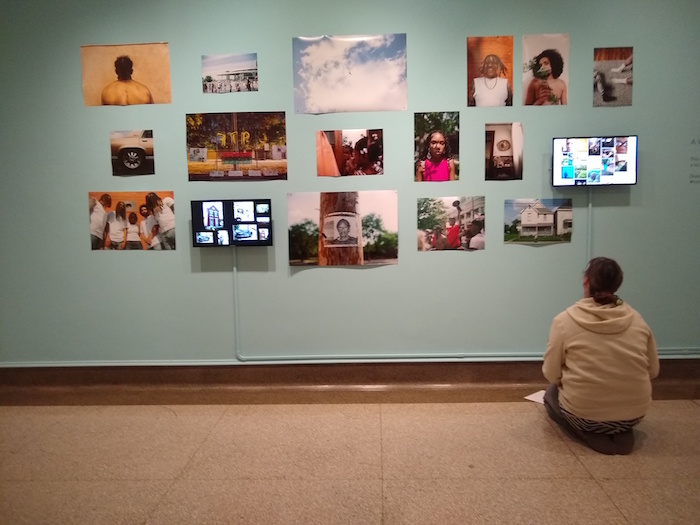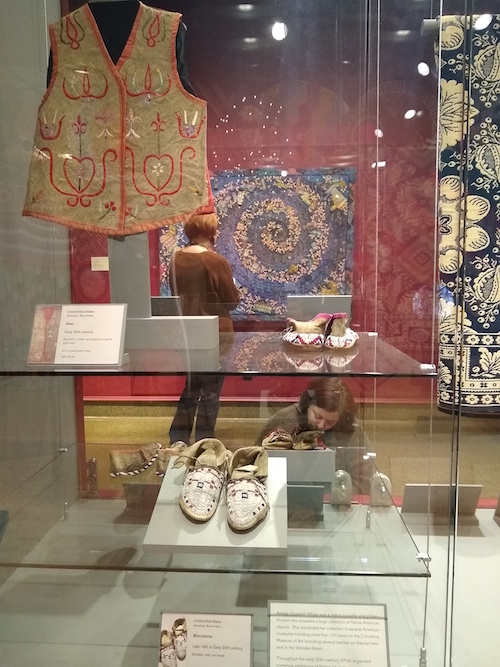
On March 5, a remarkable group of public school teachers from across central Ohio convened at the Columbus Museum of Art. We explored how creativity can help us not only to solve problems, but to better identify and understand them. We didn’t know that less than ten days later CMA and the schools would suspend in-person experiences, and that we would all be facing a fresh set of problems in need of better understanding and solutions.
One thing that makes this group so remarkable is its shared commitment: this is the group of educators who comprise the Cultivating Creative & Civic Capacities collaboration between the Columbus Museum of Art, Project Zero at the Harvard Graduate School of Education, the Martha Holden Jennings Foundation, and Battelle.
Nearly 40 teachers from several districts, elementary through high school, have come together over the course of the year to explore how to teach for an unknown world. Through experiences at the museum and in their own classrooms, we are all investigating how to cultivate imagination, critical thinking, and agency in a complex world.
At no moment in my life has it been clear how absolutely crucial it is to foster these dispositions in our youth and our teachers. Moreover, it is clear that the work of creative and empathetic world-building should inspire and empower teachers to articulate and manifest this bold vision.
When CMA launched C4, we did not know that a global pandemic would soon spotlight the tenuousness, complexity, and interconnectedness of our lives and social systems, and demand a radical reimagination of public life. However, we did know that we were already confronting complex global and local challenges demanding completely new approaches. We knew that we needed creativity – the process of using imagination and critical thinking to generate new ideas of value. We knew that we needed to illuminate how creativity and civic-mindedness interact to shape the worlds we want to live in.
To find, understand, and address the challenges of the world we must wonder, imagine, and act guided by questions of “why,” “for whom,” “for when and where.” In other words, we must act at the intersection of the creative and the civic.
We don’t have “the answers” but we’re investigating the questions together. So much about our investigation so far this year has been about learning together – physically together – as collaborative partners. Then March yanked the collective rug out from all of us. Like all of you, we asked How we could connect while apart? How might we turn this challenge into an opportunity? What do we need at this moment of uncertainty, fear, distance, and civic crisis?
As artists have always done, we stepped into the ambiguity with a spirit of purposeful experimentation. We launched our first virtual gathering by closely looking at a work of art in CMA’s collection, Lunch by George Tooker, which evokes isolation and social power. Using the chat window, we wrote a collaborative poem inspired by the work.

We then considered “repair” as a creative and civically-relevant act. Jason Blair, a public school art teacher and co-lead on the C4 project, showed us examples from kintsugi, the Japanese art of resealing broken pottery using gold so that it becomes more beautiful for having been broken. He also showed more whimsical examples of transformative repair, such as Dispatchwork, the brainchild of artist Jan Vormann in which people all over the globe use Legos to fill in cracks in buildings and sidewalks. We then challenged the group to take a “noticing stroll” around our homes or (safely) in public spaces, searching for broken things to repair in ways that give them new value. You can browse their repairs on Twitter. Some of our repairs were restorations or upcycles, acts of sustainability. We fixed zippers instead of replacing sweaters. We turned wooden pallets into herb gardens. Some transformative “repairs” were designed to put some joy into public spaces, like a tree wrapped in festive rainbow ribbon and a guerilla gardening project in a crummy curb-side patch. We asked and acted on questions at the intersection of creative and civic: “What if? How might we? Why? For whom? What else?”
Next, we have challenged ourselves to prompt others to play in the creative and civic space: Inspired by CMA’s participatory, in-gallery engagement and past C4 experiences, teachers will create bingo cards, menus, and other playful tools to engage an audience in creativity toward positive civic ends.
There is much repair, healing, and reimagination ahead of us, both in response to a once-in-a-lifetime pandemic and in response to all the challenges (visible and invisible) we were confronting before COVID19 hit the shores of our species. If we are to get through this, and be stronger for it, we will need to collectively cultivate and activate our creative and civic capacities. I am proud to work with educators committed to doing just that.
– Jen Lehe is CMA’s Manager of Strategic Partnerships, overseeing programs for learners throughout their lives. Jen directed the IMLS-funded Making Creativity Visible initiative and launched the Leaders in Creativity fellowship to build teachers’ capacity to advocate beyond their classrooms. Jen holds an Masters in Arts in Education from Harvard Graduate School of Education and a BFA in Photography from NYU. When she’s not at CMA, she’s gardening with her pit bull, Chompsky.
